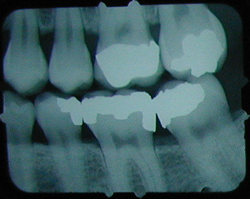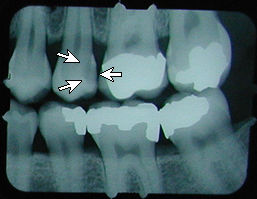Cavities
What are cavities?
Tooth Decay begins when the protein of your saliva combines with the sugars and carbohydrates of food particles left on and between your teeth. This combination creates bacteria-laden plaque, from which acid is produced that eats away at the hard enamel shell around your tooth. Left unchecked, a hole will be created in the enamel and a cavity will rapidly form in the softer dentin which lies under the enamel. If the cavity is caught in time, usually a Filling will correct the problem. Larger cavities may require an Inlay or Onlay, or a Crown. However, if nothing is done and the decay spreads, the sensitive pulp (nerve) may become involved, often causing an Abscess, and Root Canal Therapy or Extraction may be required.

Preventing Cavities
Cavities are caused by a build up of plaque, which is a sticky film on the surface of teeth created from bacteria. When this plaque combines with sugar and acid in the mouth, it can produce holes in the teeth and lead to cavities. It is very important to promote good dental care and hygiene habits to make sure cavities don’t form. Brushing twice a day for two minutes each time, flossing daily, using mouthwash regularly, and eating healthy snacks are all essential factors in preventing cavities. Additionally, seeing your dentist at least twice a year for examinations and cleanings will also help you maintain optimal oral health by catching any potential issues before they become more serious dental problems.
what does a cavity look like?

No cavity on first X-ray.

Months later, cavities that start between the teeth can’t be seen by visual examination, but they can be detected on an X-ray.
Book your appointment!
Start your journey to a healthy smile today.
